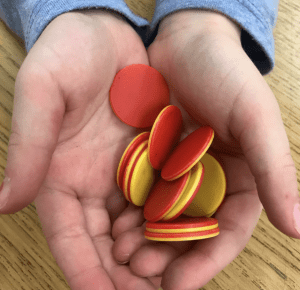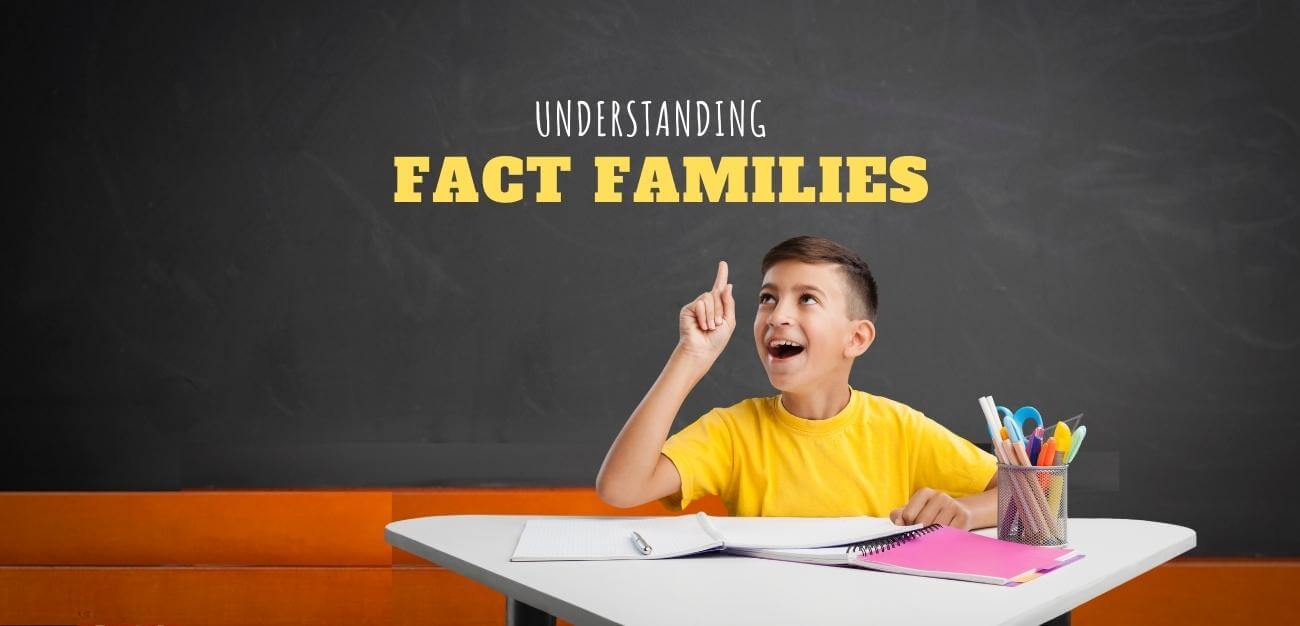Many parents remember learning about fact families when they were in first grade. But let’s face it, for many of us, that was long ago! So, for those who don’t remember, fact families establish the relationship between numbers and aid in understanding the logic behind addition and subtraction.
While fact families are typically introduced in the early years, they are important throughout schooling. By understanding fact families, students can see that there is more than one way to solve a problem and they will use this knowledge as they encounter more complex math operations. However, if an older child has any misunderstandings about fact families, it may hinder their math advancement. So, going back and revisiting fact families may be advantageous.
Fact Families and Addition & Subtraction Facts
One of the reasons fact families are so important is because they help children learn their addition and subtraction facts. When children first learn these facts, it can be difficult to keep track of all the combinations. However, by grouping them into fact families, children can more easily see the relationships between the different facts.
A fact family is made up of three numbers and can be made up of at least four math facts. For example, if a child knows that 3 + 4 = 7 then they can also deduce that 4 + 3 = 7 and 7 – 4 = 3 and 7 – 3 = 4.
You can see that each number bond fact is related to two other facts in the family. In other words, they share two of the same numbers.
Subtraction can be especially difficult for some students than addition, but fact families can often help. Overall, fact families can be a helpful way for children to remember their facts, especially in the early stages of learning them.
Fact Families and Multiplication & Division Facts
In addition to helping children learn addition and subtraction facts, fact families can also help with multiplication and division. This is because multiplication and division are actually just inverse operations of each other. In other words, if you know one multiplication fact from a fact family, you also know the corresponding division fact.
For example, if you know that 3 x 4 = 12 then you also know that 12 / 3 = 4 and 4 x 3 = 12 and 12 / 4 = 3. So, by learning one multiplication or division fact from a fact family, a child actually learns three facts! As students see that they can use known facts to find unknown facts quickly, they will increase their fact fluency.
Flexible Thinking
Fact families help children learn to think flexibly about numbers because they see that there is more than one way to make a number using addition or subtraction (or multiplication and division). This is an important skill because it helps children understand that there are often different ways to solve problems. It also helps them learn that numbers can be decomposed and recomposed differently.
When children understand how fact families work, they can use them to solve problems in different ways. For example, if a child knows that 6 + 4 = 10 then they can also work out that 4 + 6 = 10. So, if they are given the problem ‘find three numbers that add up to ten’ they could list 6 + 4 + 0, 5 + 5 + 0 or 4 + 3 + 3 as solutions, among others. Understanding Fact Families also helps children develop fluency in mental calculation because they can recall part of one fact family to help them solve another problem from the same family.
Many math learning techniques can help children with mathematics, but combining fact families and mental math is an excellent way to help children succeed in their future. When children can use their knowledge of fact families and solve problems mentally, they are forced to think about the mathematical principles involved in the problem. This helps them to develop a deeper understanding of the concept.
The Importance Of Fact Families
As you can see, there are many reasons why children need to learn about fact families. If your child is struggling with math, working on memorizing some of the basic addition and subtraction facts from different fact families could be a helpful way to help them improve their skills. Additionally, watching for opportunities to point out related multiplication and division facts will help your child make connections between different concepts which is beneficial for their overall understanding of mathematics.
How To Teach Your Child About Fact Families
Now that you understand more about fact families, it will be easier to help your child understand them. Math manipulatives are a great way to help children better understand fact families. Manipulatives are objects that can be moved or manipulated to help children learn. They come in various shapes and sizes and can be used to help explain everything from basic addition and subtraction to more complex concepts.
Two-Sided Counters

Two-sided counters are easy to use and can help explain fact families to younger children. Start by setting out 8 of them. Flip over 3 of them so 3 are yellow and 5 are red. Then, ask your child how much that makes. Write the equation 3+5=8. Continue this with the subtraction equations and other numbers and equations. Ask your child what patterns they see, and help to recognize the fact family.
At Dropkick Math, we understand the need for students to develop an understanding of fact families. Our math help services allow students to learn foundational math skills and fill in any misunderstandings in mathematics while enabling them to discover new ways of learning. Through proven strategies and manipulatives combined with an accelerated learning approach, we help students master math operations while boosting their confidence.
We offer an alternative to traditional online math tutors, as all of our classes are taught by certified Ontario teachers who make learning fun. We focus on the root of any mathematical misunderstandings and work with children and their parents to boost confidence in math and understand relationships.
Learn more about our programs today!





